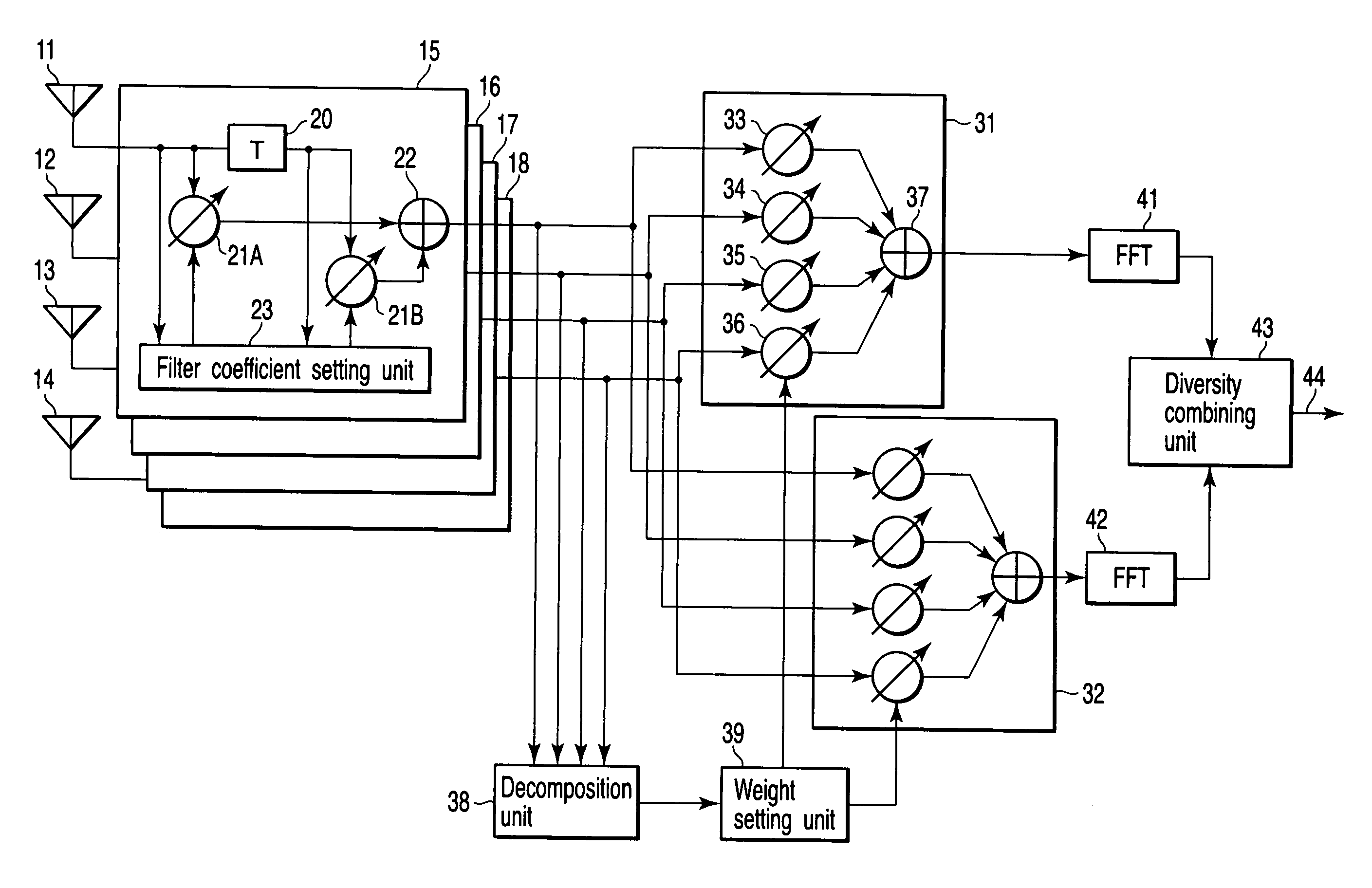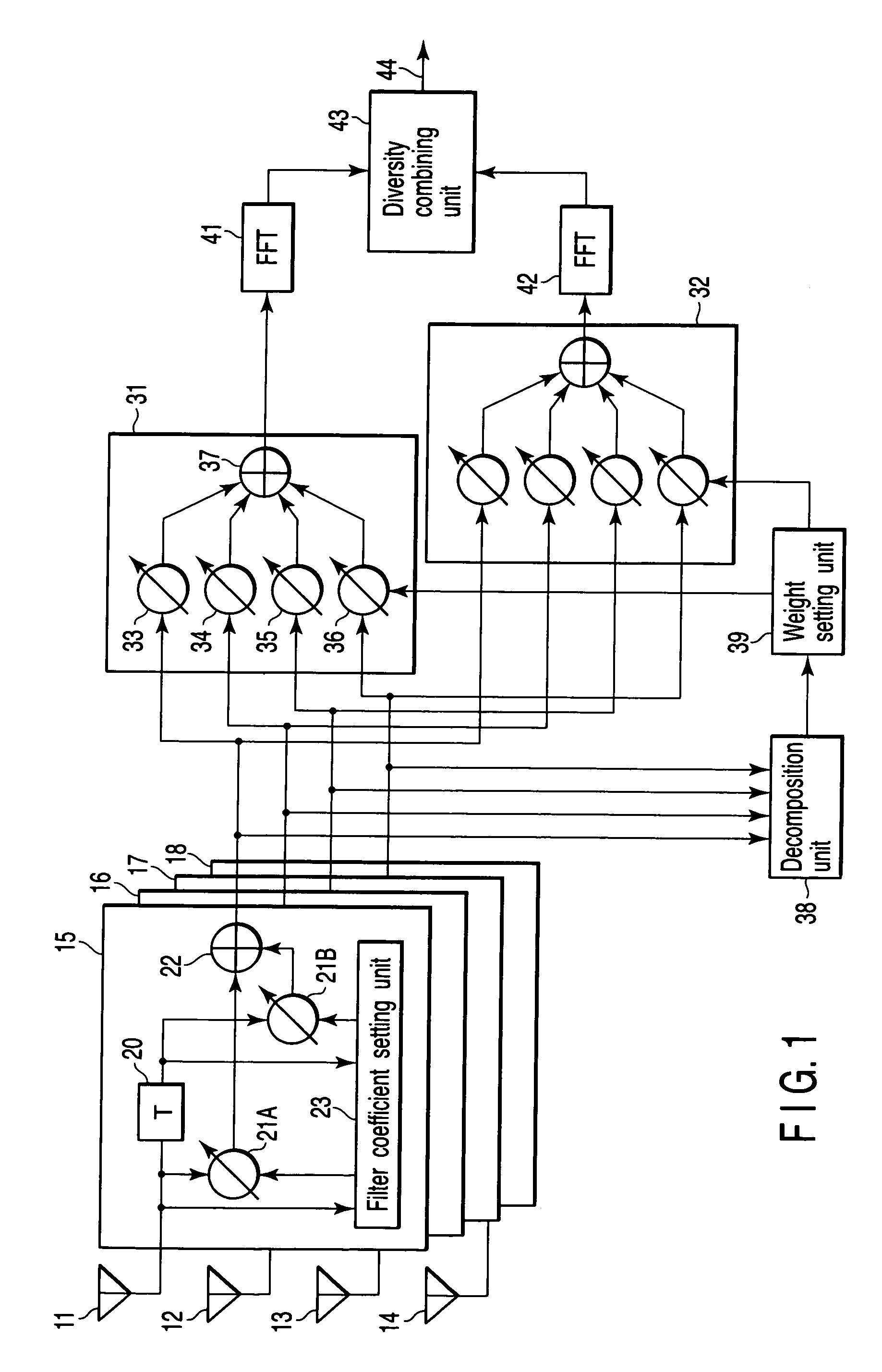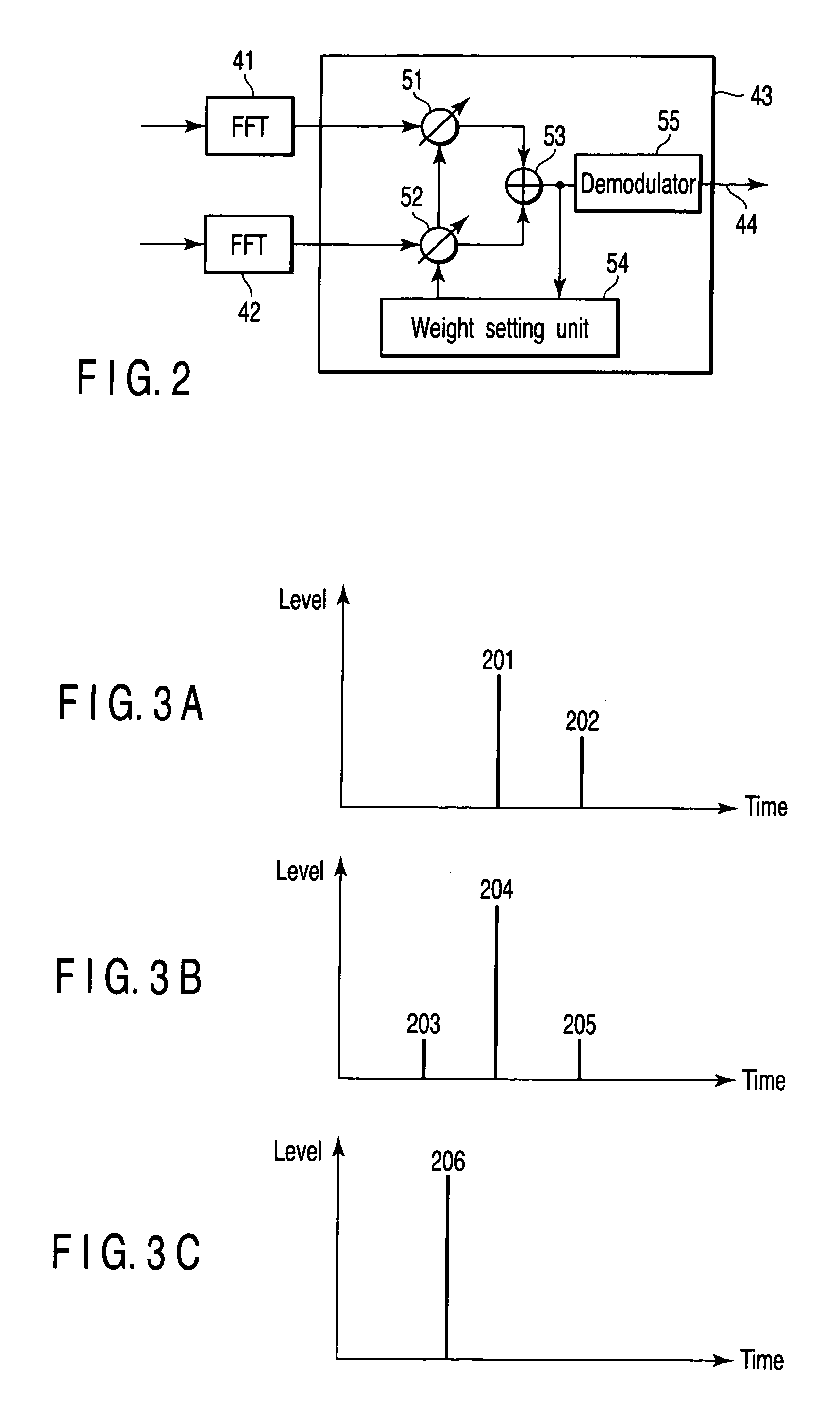Diversity receiver device
a receiver device and diversity technology, applied in the field of diversity receiver devices, can solve the problems of large circuit complexity of receivers, insufficient diversity gain, and inability to converge to optimal values, so as to reduce delay spread
- Summary
- Abstract
- Description
- Claims
- Application Information
AI Technical Summary
Benefits of technology
Problems solved by technology
Method used
Image
Examples
second embodiment
[0052]FIG. 8 is a diversity receiver device according to the second embodiment of the present invention, which differs from FIG. 1 in that it is equipped with M pieces (M>2) of beamforming units 31 to 3M. That is to say, output signals from digital filters 15 to 18 are input to beamforming units 31 to 3M. The beamforming units 31 to 3M each have multipliers 33 to 36 and an adder 37 likewise the beamforming units 31 and 32 in FIG. 1.
[0053] A weight setting unit 39 determines eigenvectors corresponding to eigenvalues λ1 to λ4 (λ1>λ2>λ3>λ4), which is determined by an eigenvalue decomposition unit 38, and sets an eigenvector corresponding to the maximum eigenvalue λ1 for the first beamforming unit 31 as a combining weight. Further, the weight setting unit 39 sets an eigenvector corresponding to the second largest eigenvalue λ2 for the beamforming unit 32 as a combining weight. Similarly, hereafter, an eigenvector corresponding to a Jth largest eigenvalue λJ is set for the Jth beamformi...
PUM
 Login to View More
Login to View More Abstract
Description
Claims
Application Information
 Login to View More
Login to View More - R&D
- Intellectual Property
- Life Sciences
- Materials
- Tech Scout
- Unparalleled Data Quality
- Higher Quality Content
- 60% Fewer Hallucinations
Browse by: Latest US Patents, China's latest patents, Technical Efficacy Thesaurus, Application Domain, Technology Topic, Popular Technical Reports.
© 2025 PatSnap. All rights reserved.Legal|Privacy policy|Modern Slavery Act Transparency Statement|Sitemap|About US| Contact US: help@patsnap.com



